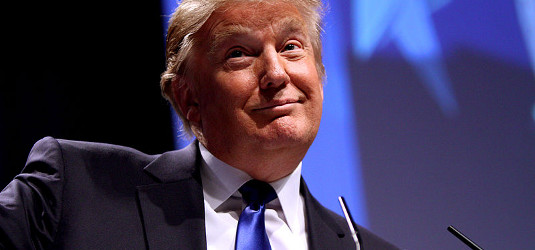When Donald Trump launched his Made in America trade strategy, he probably didn’t intend his domestic manufacturing base to become foreign-owned.
But Chinese PV companies facing punitive Section 201 import tariffs on solar cells and modules are drawing up plans to establish manufacturing facilities on US soil to get around the problem, according to a report by BMI Research.
Faced with familiar overcapacity problems domestically – with a reported 100 GW annual manufacturing capacity in China and in-country demand expected to fall from last year’s record 53 GW – big players like Jinko Solar have already committed to coming to America to hedge against a slowing Chinese market.
According to the BMI Research report, manufacturers based in what is expected to be the world’s biggest PV market up to 2027 are eyeing the anticipated second and third largest marketplaces over the same period – the U.S. and India, which between them are expected to add 153 GW over the next decade, compared to a predicted 148 GW market in the rest of the world, excluding China.
With the Indian and US governments mooting aggressively domestic-first trade policies, Chinese manufacturers may have to invest in setting up manufacturing facilities and establishing supply chains in their target markets, although the BMI report suggests companies like Jinko and Trina Solar could bet on India for both markets, as Indian-made cells and modules are exempt from the US’ Section 201 tariffs or could instead opt for factories in Brazil, Turkey or South Africa.
The dilemma facing Chinese manufacturers is whether to invest in the costly and time-consuming step of setting up in the US, given the unpredictable nature of Trump’s presidency.
Only yesterday, US Treasury Secretary Steve Mnuchin announced positive talks with a Chinese trade delegation had averted the prospect of a wider trade war. The characteristically vague nature of the announcement however, illustrates the decision facing the big Chinese PV players, with BMI reporting Trina Solar chairman Gao Jifan believes the viability of investing in facilities Statesside remains uncertain.
This content is protected by copyright and may not be reused. If you want to cooperate with us and would like to reuse some of our content, please contact: editors@pv-magazine.com.




I doubt Trina will be able to set up much of anything if the administrative review of their 2016 imports of China-cell modules is upheld at the higher 70%+ rate. The additional tariff payment due to USG of $200m+ would probably knock Trina out, or at a minimum force them to withdraw from the US market.
I find your comment interesting. The information you speak of does not seem to not be widely known. I had crunched the numbers and several of the Chinese suppliers are not going to fare well in the US.